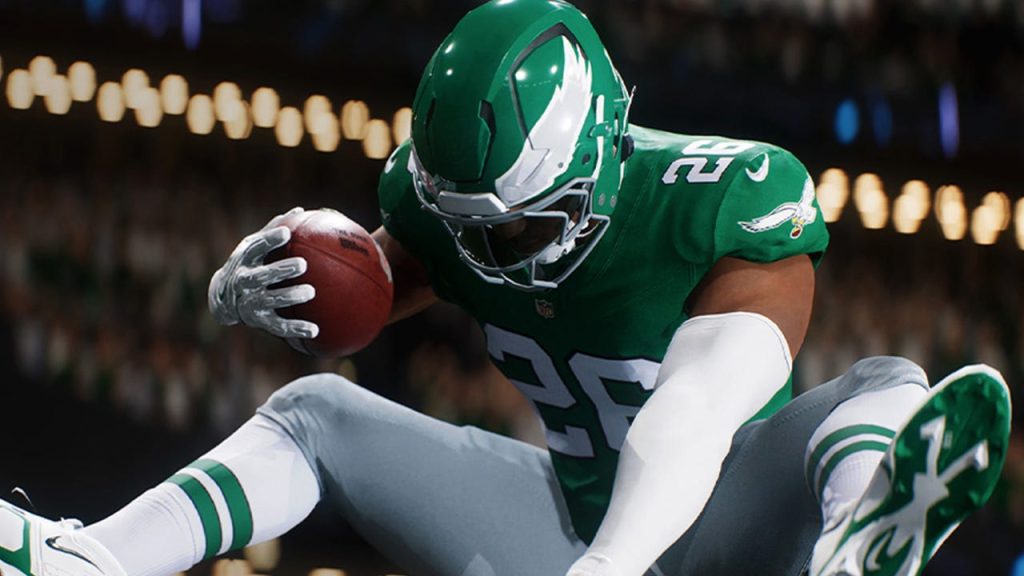Every year, I invest a significant amount of time playing Madden—like, a seriously extensive amount. I’m engaged in a league with 32 players while also managing my own Franchise mode. This doesn’t even factor in the comprehensive review process for IGN, which is quite intense. Despite my thorough gameplay experience, I consistently stumble upon new discoveries post-review, whether it’s an annoying bug or an improved grasp of underlying mechanics. With my time with Madden NFL 25 concluding, I now feel a deeper understanding. However, after exploring Madden NFL 26 briefly, everything I thought I knew has changed. Madden 26 makes significant alterations to its predecessor, and so far, I’m enjoying what I see.
Let’s highlight one of the most notable updates: the Skills Trainer. This year’s Skills Trainer represents a complete overhaul of the previous version, and I have to admit, I’m impressed. It features a wealth of new drills and much more detailed tutorials, some of which have taught me things I didn’t know before. For example, when attempting a field goal, hitting the red zone of the kick power meter results in an overkick, affecting your distance. I previously misunderstood this marker’s meaning. It’s a revelation that I shared with a fellow player who also wasn’t aware, but at least we’re both educated now. Historically, Madden has hesitated to properly explain its mechanics, often relying on YouTube tutorials. This revamp makes those intricate details much more accessible. The Skills Trainer now even categorizes drills as “Beginner” or “New to Madden,” making it easier for users to find what they need—a much-needed improvement that I’ve long sought.
Reflections on Madden NFL 25
There are many aspects to appreciate in Madden NFL 25. The on-field action has reached new heights, and the incorporation of BOOM Tech along with elements from College Football 25 elevates it beyond Madden NFL 24. The presentation upgrades are a welcome addition as well, even if the game modes remain largely unchanged. Ultimate Team still resembles a Skinner Box, Superstar hasn’t improved much, and while the Skills Trainer is good, it’s due for an update to assist newer or returning players. Franchise mode is the standout, but it still requires further attention. While the updates it received are nice, they are also long overdue. EA seems content with maintaining its monopoly on the NFL license, invoking the definition of insanity. – Will Borger, August 15, 2024
Initial Impressions of Franchise Mode
Beyond that, I’ve been experimenting with Franchise mode, focusing primarily on Coach Creation and navigating menus. While Madden may tout itself as parkour, this is a misconception; it’s fundamentally about navigating menus. Coach Creation has undergone a significant revamp, with a plethora of new head designs that are mostly superior to last year’s options, though some do look like Play-Doh creations or characters from the “Weird and Ugly” section of a game. Still, I commend the effort.
After customizing a coach, players can select from three archetypes centered around player development, offense, and defense. The former skill tree system has been discarded. Instead, you use Skill Points to unlock and enhance abilities for game day bonuses. Some of these abilities, mainly those related to players, last only a few weeks, while others, like improved scouting hires, last for the full season. While I haven’t explored it thoroughly, this seems more engaging than the previous system of simple stat boosts, which often felt uninspired.
On the field, gameplay has sped up, striking a balance between the arcade-style feel of College Football and earlier Madden titles. The Wear and Tear injury system also debuts in Madden, which raises some concerns; while it’s more realistic, I don’t particularly enjoy it in College Football, and I’m skeptical about the modifications to the on-field user interface to implement it. Time will tell.
Final Thoughts on Madden 26
Despite the introduction of Wear and Tear, player development has seen beneficial changes. You can now adjust practice intensity for every player, rather than just starters and benchwarmers at each position, which is a fantastic update. While I’m decent on the field, my strengths lie in drafting and player development during Franchise leagues, so having this extra control is invaluable. Additional quality-of-life enhancements include the ability to view player fatigue numerically rather than just through a meter—an overdue improvement that truly makes a difference for devoted players.
Not everything is perfect, though. Player cards now take longer than five seconds to load, which is frustrating compared to the quicker load times in Madden 25, especially when diving into team stats. Although EA has historically resolved loading issues, waiting five seconds for something as fundamental as a player card is exasperating, particularly for large rosters. Furthermore, Madden has revamped its QB throwing motion terminology yet again—this marks the second such renaming in just two years, and it’s frustrating each time. Understanding throwing motions is essential for QBs, and having to relearn and redesign my draft notes is tedious. I appreciate that the new names are clearer, but I urge EA to stabilize these for the near future.
Overall, I’m genuinely impressed with the changes in this year’s game. There’s still much to explore before I finalize my assessment; I need to engage with Superstar mode, delve deeper into Franchise, assess the on-field experience, and reluctantly spend time with Ultimate Team. But thus far, I’m really enjoying Madden 26, and I look forward to seeing if this initial excitement holds as I invest more time in the game.



